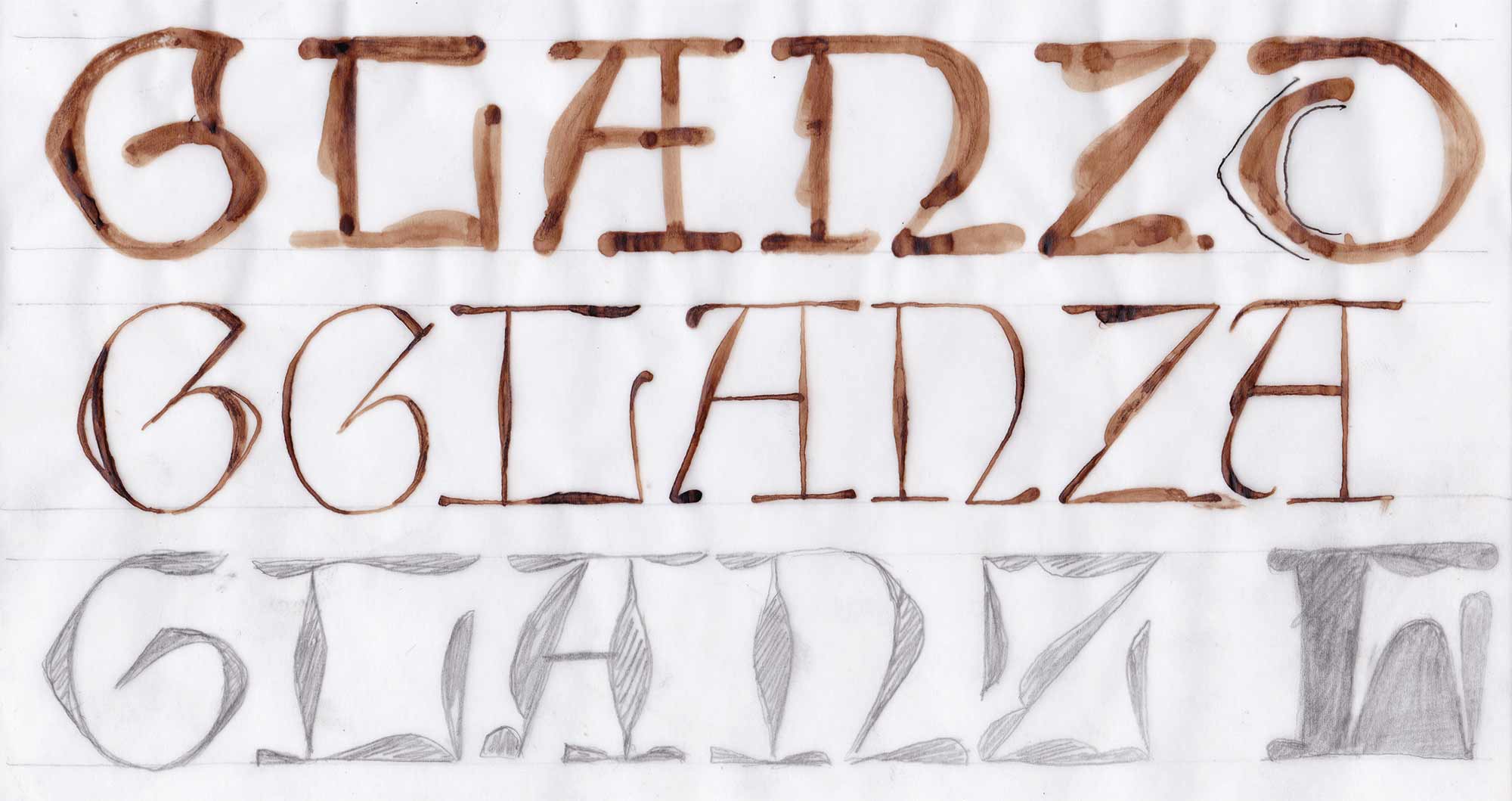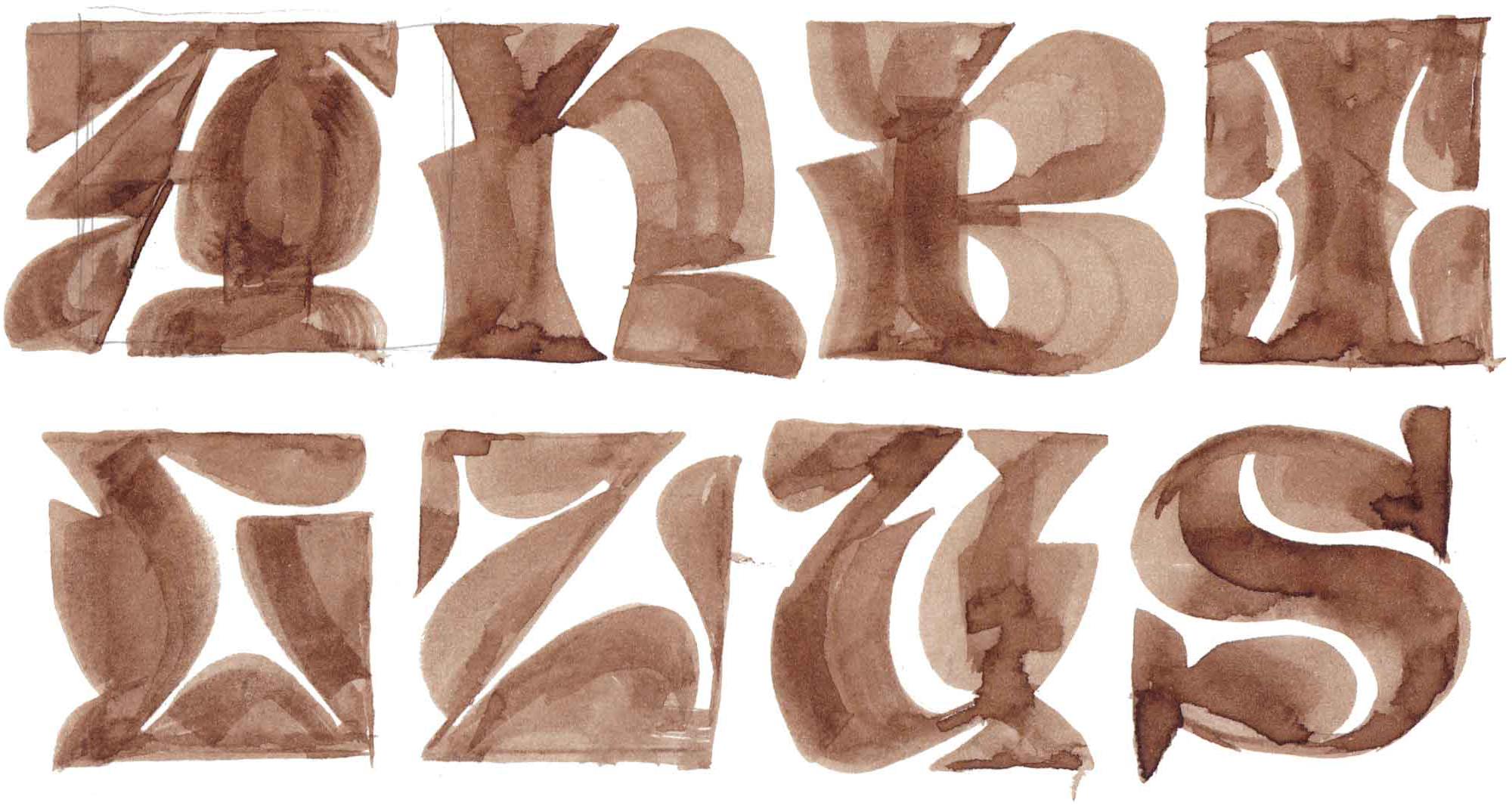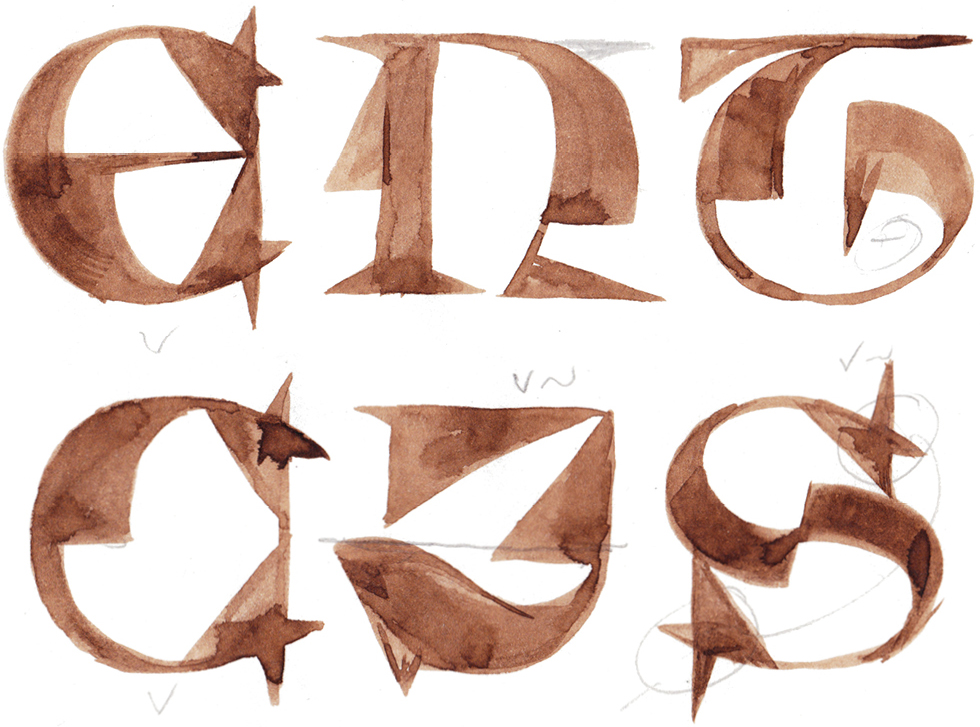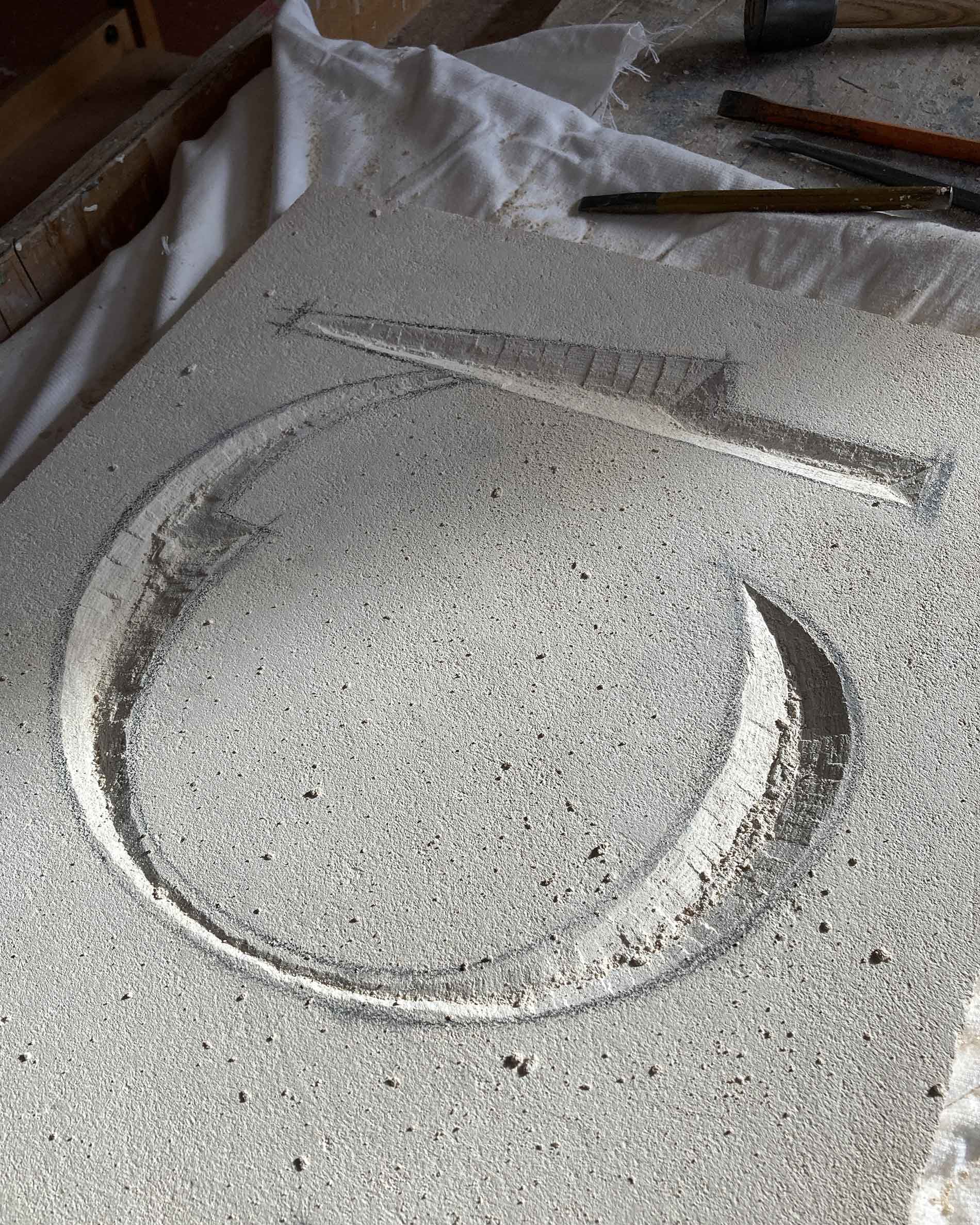Tarisel Lombardic
EsadTypeSeptember 2022 – March 2024
Gerard Unger Merit AwardProject overview • Dissertation • Specimen
Tarisel Lombardic is the second half of my EsadType graduation project. My goal was to create a typeface that embodies the grotesque caricatures found in medieval art, and to make Lombardic capitals more relatable to contemporary designers and audiences.
A digital adaptation of gothic versal lettering, Tarisel Lombardic was inspired by French inscriptions and manuscripts from the 13th century. I used traditional versal construction as a starting point to explore the relationship of outline and counterform. From there, I continued to investigate plasticity of construction and proportions. Tarisel Lombardic was also my first time designing a display typeface. It was gratifying to break free from the constraints of legibility and focus on building a visual bridge between the middle ages and the present day.
The development of the Lombardic display capitals was intertwined with that of Tarisel Text and Hybrid. Over the course of the project, my focus shifted back and forth several times, and each time the concept became clearer. The text and display components created a feedback loop: having a separate display typeface gave me an outlet for ideas that would have been too much for the text typeface. It also served as a testing ground for new shapes and some of them made their way back into the text typeface.






